Through Nomadic Eyes:
Stations of the Cross in Lodwar Cathederal, Kenya
 |
| 1 Jesus is condemned to death |
|---|
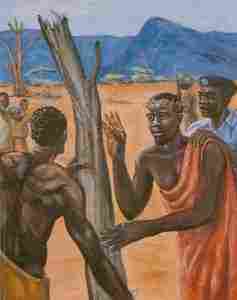 |
| 2 Jesus receives his cross |
|---|
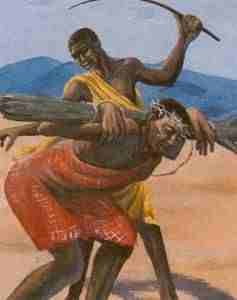 |
| 3 Jesus falls the first time |
|---|
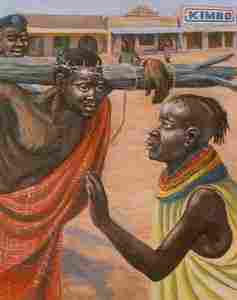 |
| 4 Jesus meets his mother |
|---|
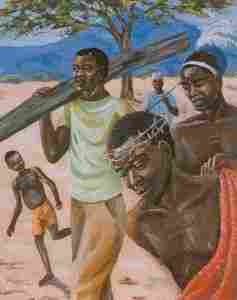 |
| 5 Simon helps Jesus to carry his cross |
|---|
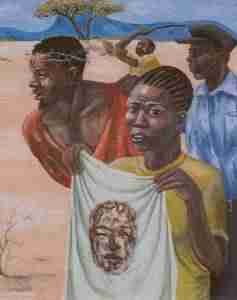 |
| 6 Veronica wipes Jesus' face |
|---|
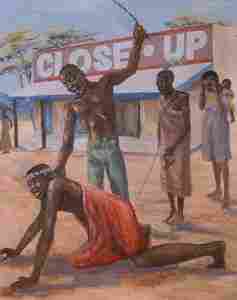 |
| 7 Jesus falls a second time |
|---|
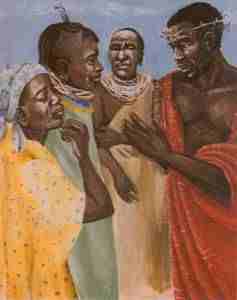 |
| 8 Jesus meets the women of Jerusalem |
|---|
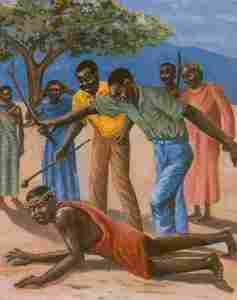 |
| 9 Jesus falls a third time |
|---|
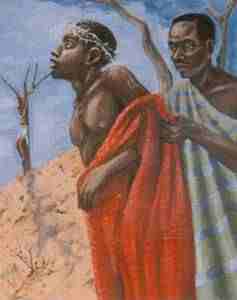 |
| 10 Jesus is stripped of his garments |
|---|
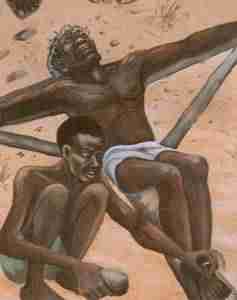 |
| 11 Jesus is nailed to the cross |
|---|
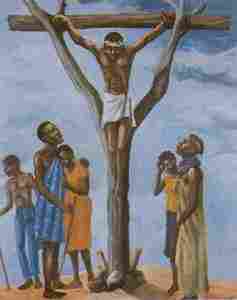 |
| 12 Jesus dies on the cross |
|---|
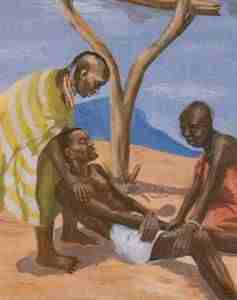 |
| 13 Jesus is taken down from the cross |
|---|
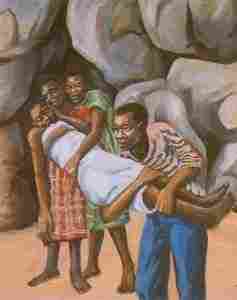 |
| 14 Jesus is laid in the tomb |
|---|
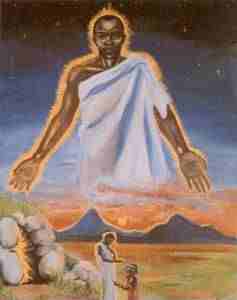 |
| 15 The resurrection of Jesus. |
|---|
[Pictures by artists from Turkana, Kenya. Photos by G. Howley. Text by Fr. Seamus O'Neill. This article appeared in the April 2000 issue of Africa: St Patrick's Missions magazine. I have reproduced it on this web page because the pictures look nice.]
The church here in Lodwar was getting too small for our growing congregation so,
having extended and improved the design, we began to think about new church furnishings
and stations of the cross. This was in 1995 when The Church in Africa from the African Synod
of Bishops had just been issued. In the chapter dealing
with Evangelization and Inculturation it said, "The Synod considers
inculturation an urgent priority in the life of the particular
Churches, for the firm rooting of the Gospel in Africa".
We decided to take this proposition seriously and set about trying to have some authentic African art in our new
church. We contacted an American Sister of Notre Dame,
Sister Janet Mullin, who had trained a team of young Kenyan artists and they agreed to help us and we gave
them some ideas.
We asked them to paint a set of stations that would
reflect the life and environment of the Turkana people. Faces, dress and places would be authentically Turkana.
Soldiers would be Kenyan, not Roman. Pilate would wear the traditional
dress of a Turkana chief and the cross would be a rough piece of a local tree.
Lodwar's shops and houses would be the background in many of the stations.
The reaction of our Christians was excellent when we unveiled the stations. The suffering Christ is central to their
sprituality and prayer. The Turkana are a people who suffer a lot, from diseases, sickness, insecurity and hunger and
have been left behind in Kenya's struggle for development.
So, when they saw a Jesus who looks like them suffering
and being crucified in their own locality they were able to
identify very closely with him. "Look at Veronica wearing
Turkana beads!" or "That's our shop on the corner!" were comments
by children and adults as they stared at the stations or discussed them excitedly.
Our new stations help us remember that Jesus is still present among us and so the roots of the Gospel sink a little
deeper here in Turkana.















